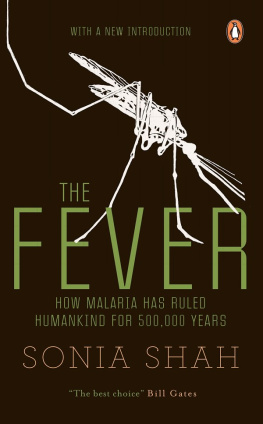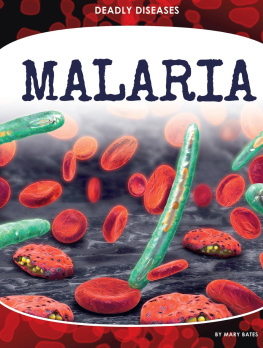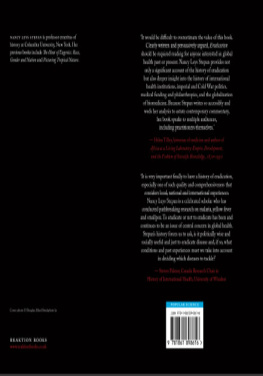Man ploughs the sea like a leviathan, he soars through the air like an eagle; his voice circles the world in a moment, his eyes pierce the heavens; he moves mountains, he makes the desert to bloom; he has planted his flag at the north pole and the south; yet millions of men each year are destroyed because they fail to outwit a mosquito.
Introduction
T he papaya trees are losing their leaves.
Not through the work of a fungal disease or a hungry caterpillar, but from the desperation of people plagued by mosquitoes and the diseases they carry.
In this case, its dengue. Crushed with sugar and water, the stolen leaves, sufferers hope, may deliver relief from the scourge.
From Delhi to Bengaluru, dengue and its fellow mosquito-borne pathogen chikungunya grab headlines. But these are just newcomers joining an age-old battle between blood-sucking insects and the warm-blooded humans they feed upon.
Its a battle thats been waged, first and foremost, by what the ancients called the King of Diseases: malaria.
Malaria has killed so many people over the long course of its history that some experts have speculated that it may be responsible for half of all deaths since the Stone Age. Its a fanciful statistic, but one that testifies to its deservedly fearsome reputation. Malaria kills hundreds of thousands around the world every year. That is a remarkable toll, given the fact that it is no mysterious stranger. For centuries, weve been armed with drugs and preventive measures that can defeat the disease. And yet it vanquishes scores nevertheless. Chikungunya and dengue, despite their freedom from any targeted pharmaceutical cures, collectively destroy less than a tenth of the number of lives that malaria takes.
These days, malaria is often written off as a relic of Indias past, some artifact of a premodern way of life. The truth is, malaria has continuously adapted to modern lifestyles, exploiting new opportunities provided by economic development, urbanization, climate change and migration across India. Inside its story lie the roots of todays outbreaks of other mosquito-borne diseases and, possibly, clues to their futures as well.

At the dawn of Indias independence, malaria sickened 75 million of the countrys 330-million-strong population, or around one in five every year. The British to exterminating malaria altogether.
By 1961, theyd achieved wild success or dismal failure, depending on how you look at it. Cases of malaria had plummeted to fewer than 50,000 a year. is like sitting on a spring. As soon as you get up, it bounces back with an explosive release of pent-up ferocity.
Nevertheless, malaria had been squelched sufficiently to allow the newly independent nations economy to flourish. The eradication campaign was dismantled. Malaria flared in the shadows of each new industrial developmentincluding thirteen epidemics of the disease that transpired But so long as the killing chemicals kept working, health officials contented themselves with an uneasy truce.

Indias 1950s-era campaign against
They focused on rural malaria because most of the countrys malaria lurked in rural areas. But that focus only made sense in a low-mobility society in which people live for generations in the same villages their ancestors did. As economic development gained momentum, that was increasingly not the kind of society most Indians lived in.
With the economy
But it was the building of the city itself that provided the lushest opportunities for malaria and its mosquito carriers. Piped water supplies had expanded, but mostly provided only an intermittent supply, necessitating the installation of As the number of construction sites multiplied, so did the number of stagnant pools of curing waters. The developers would raise not only luxury apartment complexes but armies of mosquitoes as well.
Migrants, who comprised 90 percent of the construction workforce,
With malarial mosquitoes flitting from water tanks to masonry tanks to curing waters at construction sites,
In Mumbai, monsoon rains filled the holes and crevices in half-built construction sites, abandoned while city officials took developers to court over their excesses. The malaria outbreaks that followed spread through the
Malaria experts, caught off guard by the explosions of the disease in the cities, rushed in to figure out where the mosquitoes and the
They studied migrant construction workers too. The workers suffered from injuries, skin infections, gastrointestinal problems and hypertension.

Even as malaria conquered the cities, its 1950s-era reputation as a mostly rural problem persisted.
The resilience of the myth lay in part in the way information about the disease was collected. In rural areas, health officials actively sought out malaria cases to diagnose, treat
With laser-like scrutiny on rural malaria cases and little more than a shrug toward urban ones, it was easy to maintain the illusion that malaria was a problem of the countryside. That illusion, in turn, served an unspoken but powerful political purpose. It implicitly portrayed the disease as a problem of backwardness, one that could be swept away by the economic development so triumphantly pursued by political leaders.
In fact, malaria may have been just the opposite: a problem of unbridled urbanization.

Malarias conquest of the city paved the way for the arrival of dengue and chikungunya some years later.
People were not the only migrants that arrived to capitalize on new opportunities in Indias cities. New kinds of mosquitoes came too.
Once the new apartment complexes were built, urbanites started to move in, creating a new river The diseases they carrieddengue and chikungunyaerupted not long afterwards.
Hundreds fell ill with chikungunya and dengue in Delhi in 2016. Officials recorded only a handful of malaria infections during the outbreak, but there were clues that it may have lurked just below the horizon they surveyed.
It was chikungunya and dengue that frightened urbanites, but how much that was due to the illusion of malaria as a far-away problem of backwardness is unknown. It was not only the landscape of malaria










